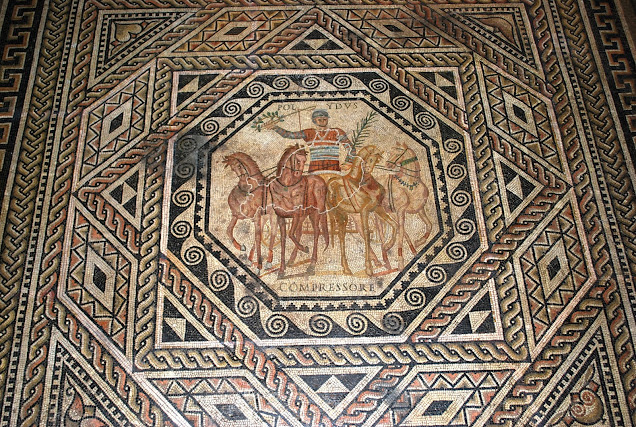To the circus of Tarraco!
 This beautiful wooden model, gives an idea of the splendour of the circus of Tarraco during Roman times. It was build during the reign of Domitian (81-96 AD). It was rectangular in shape, some 325 meters long and with a width that varied between a 100 and a 115 meters. It occupied the width of the city (!), from one wall to the other. The circus was the setting for one of the most popular spectacles in ancient times: the chariot race. The splitterwall, or spina, was decorated with commemerative monuments of the city or specific benificiaries.
This beautiful wooden model, gives an idea of the splendour of the circus of Tarraco during Roman times. It was build during the reign of Domitian (81-96 AD). It was rectangular in shape, some 325 meters long and with a width that varied between a 100 and a 115 meters. It occupied the width of the city (!), from one wall to the other. The circus was the setting for one of the most popular spectacles in ancient times: the chariot race. The splitterwall, or spina, was decorated with commemerative monuments of the city or specific benificiaries.
Looking at the picture above, you can hardly imagine that this construction was once a lively scenary of chariot and horse racing. Nevertheless, the city tries to recover some of its ancient past. The blind wall of the 'soon to be demolished' building, visualizes the place where we are in the picture. A clever way of documentary. In his book 'Wagenrennen' or 'Chariot racing', Fik Meijer, professor Ancient History at the University of Amsterdam, gives an impressive, illustrative inside in the world of the classical circus. So at this very place, supporters of various factio or supportersgroup - albata (white), aurata (gold), prasina (green), purpurea (violet), russata (red) and venata (blue) - were as fanatic as hooligans today. Facios with - like those in the Circus Maximus in Rome - histories for over several centuries. In fact, Tarraco started with two factios, the 'blacks' and the 'whites', and later the greens and the blues.

It is therefore great that the longitudinal vault has been preserved an you can really walk through the ancient building, like you were a jockey yourself! Only after kicking some tourist into the cellars at the right site of this picture. The circus of Terraco is considered as one of the best preserved Roman circuses in the West. If you have visited the Circus Maximus, you can grasp this claim :(.

The Terraco museum exposes various great objects of the ancient city. Among these, the beautiful oillamp with a biga, a 'carriage en pair' or 'tweespan'. More pictures of the Museum of Tarragona, you can find here! To get an impression of a Roman circus, looking at Ben Hur is a must! For this message look at Youtube.



Reacties
Een reactie posten